Have you ever experienced a one-sided headache, with the sensation of being stabbed in the eye with a red hot poker? If so, you may have experienced what’s known as a Cluster Headache (CH). CH is considered one of the worst types of pain experienced by humans. This type of headache is also known as the “suicide headache,” due to the high rate of suicide amongst patients who can no longer stand the pain. Read on to learn the symptoms, treatments and prognosis for cluster headaches.

Cluster Headache Facts and Treatments
Cluster headaches are one of the most painful conditions known to man. Read on to learn the symptoms, treatments and prognosis for patients who suffer from CH.
My Cluster Headache Diagnosis
Cluster Headaches
I was recently diagnosed with cluster headaches, which came as quite a shock. I had migraines when I was younger, but never anything like these new headaches. When the first “attack” took place in the middle of the night, the pain was excruciating on the right side of my head. The pain covered the right side of my forehead, my right temple, right eye and eye socket. My right eye felt as if it was being stabbed, over and over, with a red hot poker. The attack lasted for some time, and the next morning I had typical migraine symptoms. The migraine-type pain lasted for about 2-3 days, and then the pain settled down into what I would call moderate sinus infection pain. It took about two weeks for my head to “settle down” again, though the eye pain never has gone away, even after four months.
The first thought you have when something like this happens is that you’re having an aneurysm or a stroke. The next thought might also be that you’re experiencing a brain tumor. When no further symptoms developed, I thought the whole episode was just a one-time experience. I never thought these headaches would continue on for four months. My doctor ordered a brain MRI and an MRA, and happily the results were all clear. There is no apparent abnormality in my brain causing this pain. One side note, I was happy that the imaging tech could confirm I had a brain! Going just past four months, I’ve had one major attack each month, with smaller attacks coming daily. The neurologist has started treatment for my cluster headaches, but we’re in the process of experimenting to see what medication or medication combination will work to control these CH attacks.
As a result of my own CH diagnosis, I began researching this condition to find out all I could. I wanted to share with you, here, some of what I’ve learned about cluster headaches. But first, let’s take a look at the disclaimer below.
Disclaimer
Cluster Headaches
This article is for informational purposes only, and is not intended to replace or substitute the advice of a trained, certified medical professional. I have researched this topic with the aim of providing accurate information about cluster headaches. There is no warranty or guarantee that all of this information is correct. I am not a health care professional. I cannot take responsibility for the results or consequences of any attempt to use or follow the information contained in this article.
If you believe you’re suffering from cluster headaches, it’s important to see your doctor right away, and to be referred to a specialist who is knowledgeable in treating CH.
A Cluster Headache Attack in Process
Cluster Headaches
What are Cluster Headaches?
Cluster Headaches
Cluster headaches are sometimes referred to as “migraine cluster headaches,” Horton’s Headache,” “trigeminal headaches,” or “histamine headaches.” Cluster headaches are sometimes classified as a type of migraine. However, the World Health Organization (WHO) classifies CH as a primary headache. (Primary, meaning the headache is not the result of some other cause). Cluster headaches get their name from the fact that attacks come on a regular schedule over a period of time. These periods are referred to as cluster periods. Cluster periods vary by patient, with some patients enduring one to three episodes a day.
These headache attacks can last anywhere from 15 minutes to three hours (or more), and may come at a certain time of the year, such as fall or spring. They may also come at the same time each day; most often at night, but can also take place during the day. Cluster periods can take place for a few days or weeks, or could last months or years. There are usually no signs that a CH attack is coming. The pain seems to come suddenly, as if from nowhere. Cluster headaches can stop as suddenly as they start.
Cluster Headache Symptoms
Cluster Headaches
CH pain is described as boring, sharp, stabbing, or burning and seems to be steady, rather than throbbing (for most patients). The pain is typically felt on one side of the head, with severe to excruciating pain in, around and behind the eye, forehead, and the temple. Pain can also travel to other parts of the head and face, including the scalp, the cheeks of the effected side, the lips, down to the jaw, neck and even to the shoulders. CH pain is so severe that most patients can’t stay still, but must move restlessly around, in order to try to relieve the pain. This type of headache pain is disabling until the severe, excruciating pain ends.
Additional cluster headache symptoms include tearing, watery eye, runny and/or stuffed nose, red or bloodshot eye, reduced pupil size, a drooping eyelid, swelling on the effected side of the face, forehead and facial sweating. Other symptoms may be similar to a migraine, such as sensitivity to light and sound, nausea, and vomiting. Some patients may also cry, scream, and curse due to the amount of pain they’re experiencing.
Cluster headaches can go into remission. The remission period may be only a matter of a few hours or a day, or could last a month or longer. The length of remission varies from patient-to-patient. After the remission period, the headaches typically return, though some “cluster heads” (the name for patients who have CH) may never experience another attack in their lives.
Cluster Headache Facts
Cluster Headaches
Cluster headache is rare; occurring in about 0.1 percent of the population (less than one in a 1000 people). CH usually starts before the age of 30, but can also strike in midlife, and is more common in men than in women. This condition can run in families, and is not caused by an aneurysm or tumor.
About 90 percent of “cluster heads” experience episodic CH; headaches that last up to 6 weeks, and then suddenly end. Approximately 10 patients experience chronic CH, where headaches come on a daily basis for years, without periods of remission. The pain of a cluster headache is more severe than migraine pain.
What Causes Cluster Headaches?
Cluster Headaches
Scientists and doctors don’t know exactly what causes CH, but they have learned the trigeminal nerve is activated, and/or the hypothalamus may also be involved.
The trigeminal nerve, known as the Fifth cranial nerve, runs from the base of the brain, and then branches out to both sides of the head and into the face. The nerve has three branches on each side of the face: the ophthalmic nerve, the maxillary nerve and the mandibular nerve. These nerves are responsible for sensation in the face, movement, chewing, biting and swallowing.
During a CH attack, the trigeminal nerve becomes irritated and causes the severe pain in, behind and around the eye. This nerve is also responsible for other cluster headache symptoms, such as tearing, runny nose, etc.
Scientists believe the trigeminal nerve is somehow stimulated by the hypothalamus. The hypothalamus is a small, almond-sized portion of the brain, near the brain stem, that controls many of our bodily functions. The link between the hypothalamus and CH is due to the fact that this portion of the brain is a link to the nervous system. The hypothalamus also controls our body’s circadian rhythm (also call the biological clock), that regulates our sleep and wake cycles. Imaging studies, done when CH patients are in the midst of an attack, show the hypothalamus becoming active during an attack. Researchers suspect that these excruciating headaches are caused by a biochemical released by the hypothalamus, but no one is sure. The complete mechanism of cluster headaches is still not well understood.
Cluster Headache Triggers
Cluster Headaches
Just as with many chronic illnesses, cluster headaches have “triggers” that can set off attacks. The most common CH triggers are:
- Alcohol (even a small amount can set off an attack)
- Cigarette smoking
- Bright light (artificial or natural)
- Certain medications (both legal and illegal)
- High altitudes
- Heat
- Foods high in nitrates (salami, bacon, and other preserved meats)
- Lack of sleep
Cluster Headache Treatments
Cluster Headaches
There is no cure for cluster headaches, but there are several different treatments available to help prevent and minimize the number of attacks, and to help control the pain. No treatment works for every cluster head; it may take some time to experiment to find the best treatment for each patient. Usually, a combination of medications and other means can help to manage cluster headaches.
List of Cluster Headache Treatments (Not an exhaustive list)
Abortive CH Treatments
- Oxygen: is the one of the first lines of treatment for CH. Oxygen should be given at the first signs of an attack, at a rate of 8l/minute for 10 minutes), and should be administered with a non-rebreather mask. Oxygen should be administered until the attack has stopped. Patients need to get a prescription from their doctors in order to keep oxygen at home. No one’s sure why action works to stop a cluster headache.
- Triptans: are used to help stop both migraines and cluster headaches, and include Imitrex, Imigran, and a few others. These medications are serotonin agonists, and help to constrict the blood vessels and veins in the head. Triptans should be used at the first signs of a cluster headache attack. This medication can be given by pill, self-injection or as a nasal spray. Triptans are not recommended for those who have high blood pressure or ischemic heart disease.
- Dilyhyrdoergotamine (DHE): is another abortive medication, and can be administered by IV, self-injections or as a nasal spray.
- Capsaicin: is used in many types of medication for pain relief. This is the chemical in peppers that makes them taste hot. Capsaicin is used to abort an attack, and may even be helpful to use as a preventive medication, and is in nasal spray form. Here, I need to add a personal note. I have tried capsaicin spray to keep a CH attack from developing, but had no luck. However, during my last attack, I finally remembered the spray (3 hours later) and used it. Within about 10 to 15 minutes the attack slowed and ended. It could be coincidence, but I believe the spray worked. Next time, I’m going to try the spray right after the attack starts and see if it will end sooner.
- Lidocaine: is a pain reliever you may have experienced when having a tooth worked on by your dentist. Lidocaine relieves topical pain (as a local anesthetic), but can also be used to stop a cluster headache when sprayed into the nose.
Preventive Treatments for Cluster Headache
One of the goals of CH management is to prevent the attacks altogether. There are ways to prevent CH with no medication:
- Avoid alcohol during your cluster period
- Avoid smoking
- Develop good sleeping habits, such as going to bed at the same time every night
- Avoid taking naps during the day
- Stay away from foods that seem to trigger attacks
You might also consider keeping a headache diary to track your CH symptoms. Stay away from foods containing nitrites and by keeping track of your symptoms and triggers in a headache diary. You can use a calendar, notebook, apps specifically designed for your mobile device, etc. to make a daily record of your CH symptoms. Tracking your headache symptoms will help you and your doctor to spot patterns which point to specific triggers.

Medical Treatments to Prevent Cluster Headaches
No one medical treatment will work well for every patient, and it may be necessary to experiment to find the right medicine or combination of medications/treatments that will work for you. The following is a list of some of the available treatments and medications to prevent cluster headaches (this is not an exhaustive list).
- Calcium channel blockers: researchers and doctors are not sure why these medications work to prevent CH. Calcium channel blockers are often the first line of preventive treatment. It may be necessary to combine calcium channel blockers with other medication in order to obtain better cluster headache management. Verapamil is the most often used in this manner.
- Lithium: is typically best for those who have chronic CH, while it’s less effective on the episodic form. Lithium seems to help stabilize serotonin in the brain. This medication comes with many side effects, and is often used as a last resort if other treatments don’t work.
- Ergots: are a very effective preventive medication, and work to help narrow blood vessels in the head. These medications can’t be combined with triptans, and do have significant side effects. Ergots come in pill or self-injectable forms.
- Gabapentin: is an anticonvulsant originally developed to treat epilepsy. However, doctors have found that gabapentin also works for neuropathic pain, such as cluster headaches. Gabapentin works to slow pain messages from nerves to the brain, while soothing irritated nerves. Neurontin is an example of this type of medication.
- Melatonin: is a natural hormone produced by the body. Its job is to help regulate our internal biological clock, including our day and night cycles, as well as sleep and wake cycles. Melatonin seems to help many cluster heads when taken in the evening. The recommended dose is 10 mg taken about 30 minutes before bed.
- Nerve Block: are injections that contain an anesthetic and a corticosteroid. These shots are injected around the occipital nerve at the back of your head. Nerve blocks help to block the pain messages from being passed along the nerve and on to the brain. This treatment is usually temporary.
- Surgery: is sometimes used to damage the nerves that carry pain messages to the brain, including the trigeminal nerve for patients who can’t find relief with medications. This treatment runs the risk of causing paralysis or weakness in the muscles of your face.
- Electro Stimulation: is another type of surgery used to help patients who have frequent cluster headache attacks, and for those who don’t respond to medications. The electrical device is implanted on the left side of the chest, with lead wires connected to the occipital nerve. The stimulator sends mild electrical pulses to the nerve, which disrupts the pain message from being carried to the brain.
- Deep Brain Electro Stimulation: is another form of electro stimulation, and is often used for patients who have the chronic form of CH who don’t respond to drug therapy. Wires are implanted directly into the hypothalamus, which connects to the device (placed under the collar bone).
All medications have side effects that will be different for each person, and not all medications will work for every patient. Be sure to watch for side effects; if you have any questions or concerns about your medication, be sure to talk with your doctor or other health care provider. It’s also important to make changes in your lifestyle that may help to prevent or avoid attacks. Most cluster heads go on to lead normal, happy lives once they find the combination of treatments that manage their CH.
Home Remedies for Cluster Headache Pain
Cluster Headaches
I've been experimenting to find out what works to help me through the cluster headache attacks. The items below are a few methods that help me. One of the best is the Sinol Headache nasal spray. It's made with capsaicin--which does burn when you inhale it, but the pain relief can be quite dramatic. I must say Sinol doesn't always work, but there have been a couple of attacks where it was able to stop the pain dead in its tracks.
Another of my favortie home remedies is using an ice pack. Some cluster heads are not able to stand placing heat or cold directly onto their faces, as this seems to increase the pain. I am one such cluster head. After experimenting, I found that placing an ice pack on the back of my head to be the most soothing. I use an ice pack during the CH attacks, but also try to "freeze my brain" every night at bedtime. This works for me, but may not be helpful for everyone.
Home Remedies to Relieve Cluster Headache Pain
Cluster Headaches
 |  |  |
| 2-pack Biofreeze Pain Relieving Gel 3... | Headache Reliever Only $39.99 | IMAK Eye Mask, Pain Relief 1 ea |
 | 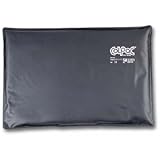 | |
| Sinol Headache Relief Spray, Migraine... Only $13.39 | Cold Pack - ColPaC Brand - Black Poly... |
Prognosis and Life After Diagnosis of CH
Cluster Headaches
Cluster headaches are one of the most painful conditions known to man, and are not life-threatening in nature. However, CH causes a high level of disability and low quality of life for many cluster heads. The key to managing these headaches attacks is to work with your doctor to find the best combination of medical treatments to prevent and abort cluster headaches. It takes some time and patience to work with your doctor to find a solution that fits your specific needs.
As for me, we’re still in the process of learning what treatments will work to lessen the intensity or stop the cluster headaches that began four months ago. I have high hopes we’ll find the right combination—I’m not giving up!
You might also like
How to React to and Help a Loved One with CancerDealing with cancer? Learn how to react, treat and care for a loved one when ...
Dry Flaky Skin on Face, Treatments and Homemade RemediesDry flaky skin can be a painful experience. Itchy dry patches on face can occ...
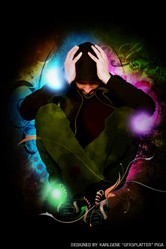

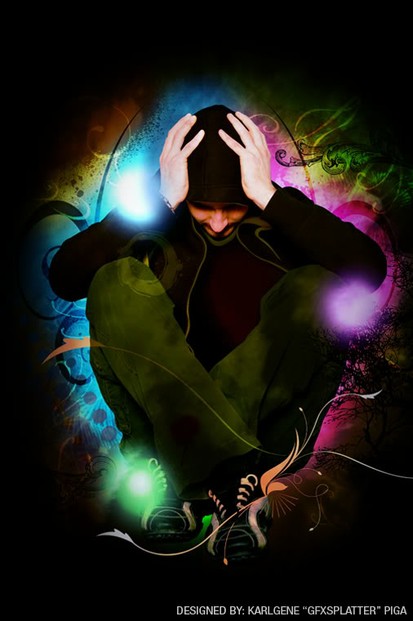
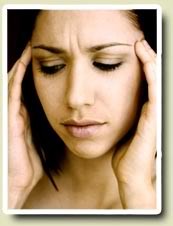
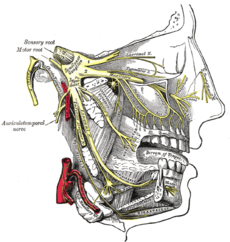
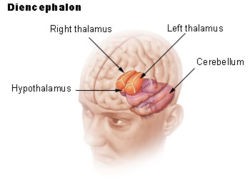


 Hair Chalking Popular Temporary Hair Dye Trendon 04/24/2012
Hair Chalking Popular Temporary Hair Dye Trendon 04/24/2012
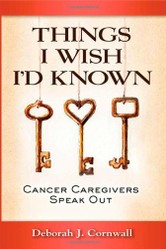
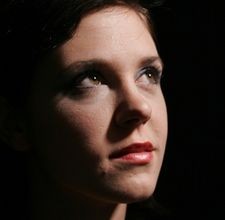
Comments
Thanks katiem2. I'm so sorry to hear you suffer with severe migraines due to head trauma. You're so right--headaches due vary from person-to-person. I hope your migraines are responding to some type of treatment. I'm still in the process of finding what works. Thanks for sharing your experience--and thanks for your comment. :0)
Headaches are as unique in personality as we people are. I've suffered with severe migraines since I sustained head trauma from a car accident. I've had many indepth conversations with my neurologist. The pain from any such headache or migraine is debilitating. Great and helpful article and facts. :)K